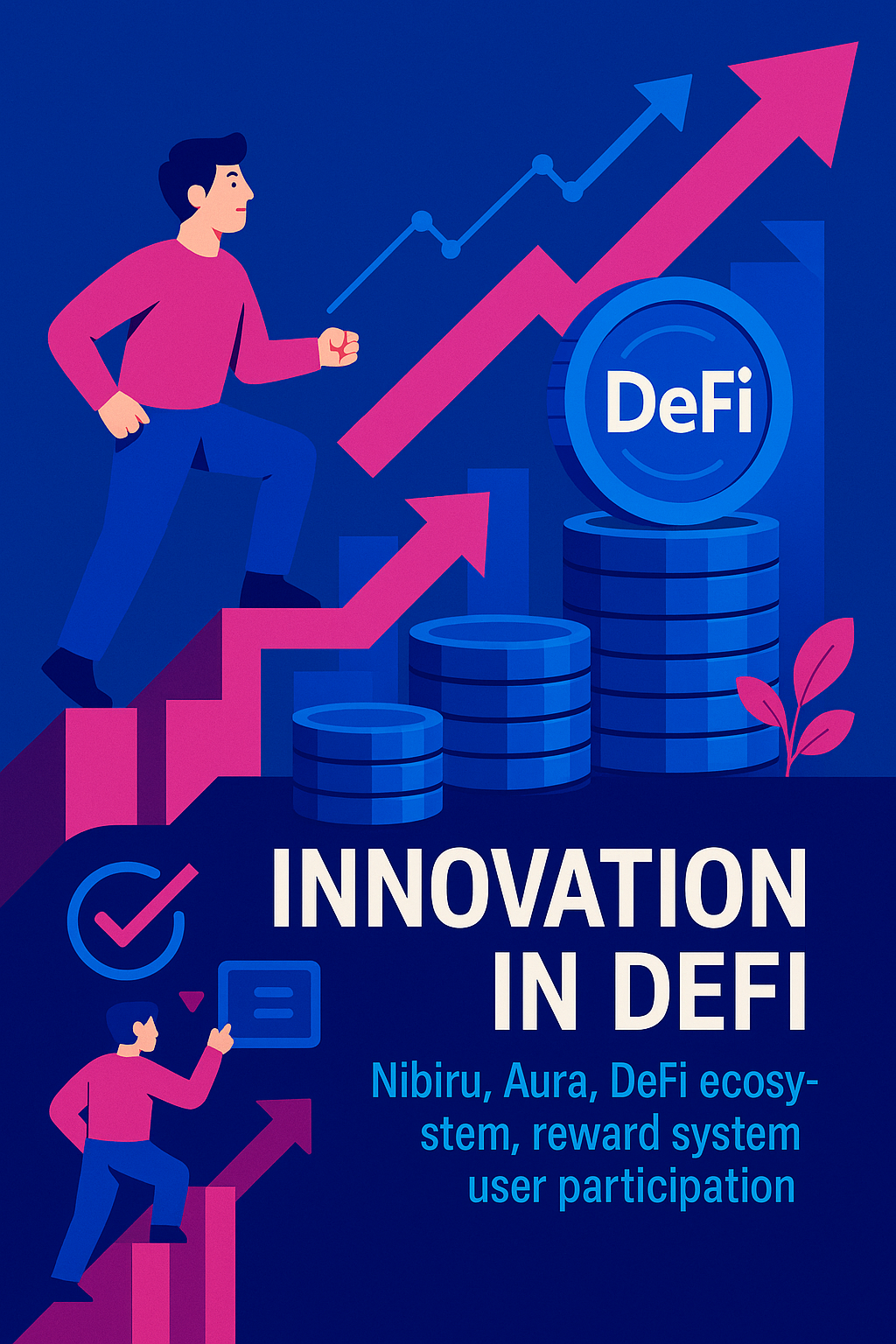Let me rewind to the ICO hangover of early 2018
I still remember sitting in a stuffy coworking space in Singapore, watching BitConnect implode on a grainy livestream. Back then the prevailing belief was that only early insiders got paid and everyone else got rugged. Fast-forward seven years and the industry is older, bruised, and—surprisingly—still experimenting. When Nibiru dropped its Block Party announcement this week, I felt that same spark I felt during the dawn of yield farming in 2020, but with a hard-earned dose of skepticism.
Here’s what actually happened
On June 5th, 2025, the Cayman-registered Nibiru Foundation rolled out a program called “Block Party.” The gist: users earn Aura, an off-chain points system that tracks on-chain behavior—trading, supplying liquidity, depositing collateral in the lending pool, and even finishing gamified quests. Each season, those Aura points reset, creating an ever-present race to stay active instead of quietly yield-farming on autopilot.
The team’s medium post claims that 1 Aura equals 1 raffle ticket in upcoming token drops, fee rebates, and premium NFT mints. No hard cap was disclosed, but they did publish some early emission math: 40% of Aura in Season 0 is earmarked for spot & perpetual traders, 30% for LPs on Nibi-Swap, 20% for money-market lenders/borrowers, and the remaining 10% for community quests. If you’ve been around since dYdX’s epoch system, that pie chart should ring a bell.
Why I’m paying attention (and why I’m not aping in blindly)
In my experience, incentive programs fall into two buckets: mercenary liquidity traps (think Vampire Farm on SushiSwap in 2020) or sticky flywheels (e.g., GMX’s real-yield model). Which category Nibiru lands in depends on two variables that the press release left vague:
- Token sink mechanics. If Aura only flows one way—into farmers’ pockets—expect dumpage the second it converts to NIBI tokens.
- Point sybil-resistance. Off-chain points are easy to spoof with a dozen wallets unless there’s some identity or gas-cost deterrent. The doc mentions a “reputation multiplier,” but no specifics.
Still, Nibiru isn’t some random fork. The chain runs on Cosmos SDK with Wasm smart-contracts, and it secured a $12 million seed in late 2022 from Tribe, Republic, and ArkStream. I’ve chatted with its co-founder, Unique Divine, back when he was grinding at Google’s A.I. research group—sharp guy who survived the Terra meltdown without losing his soul. That background matters because execution risk, not ideas, kills most L1s.
This isn’t the first points meta—here’s what the last one taught me
We lived through FriendTech points in ’23 and Blast Gold in ’24. In both cases, points created a speculative secondary market before the actual token dropped. OTC desks were literally trading screenshots of balances. If Nibiru tries something similar, brace for dark-pool chaos on Telegram. I watched a buddy unload 50k FriendTech points at 6 cents each, only to see them price at 12 cents after launch. Cheap tuition for him, but still painful.
Tangent: The psychology of “reset seasons”
I find the seasonal reset idea fascinating. It mimics Fortnite battle passes and keeps whales from coasting on early-bird advantages. In DeFi Summer 1.0, the problem was Gini coefficients on steroids. Early LPs farmed enough governance tokens to perma-dominate votes. By wiping Aura each season, Nibiru tries to flatten that curve. Whether that works will hinge on how quickly new users onboard relative to whales rotating capital.
Where the numbers could get spicy
Let’s play napkin math. Suppose Season 0 lasts 90 days and they credit 1 billion Aura total. If the implied FDV of the eventual NIBI airdrop is $1 billion—a conservative multiple compared to Sei or Celestia—then each Aura could be worth roughly 0.001 USD. A trader stacking 2 million Aura via leveraged perps would be looking at a potential $2k windfall. Not life-changing, but enough for the degen crowd to rally. And if the team tacks on fee rebates (dYdX’s went as high as 35%), retention could bloom.
Potential speed bumps
1. Latency wars. Nibiru touts 1,000 TPS, but high-frequency traders armed with Skip or MEV-boost boxes will test that claim the second volumes spike.
2. Regulatory haze. The Caymans are fine, but U.S. users might still get geo-blocked if Aura is deemed a futures on unissued tokens. Remember the CFTC’s glare on Polymarket.
3. Oracle risk. The platform relies on dual price feeds from Pyth and Nibi’s own validator quorum. A single glitch like Solana’s Pyth mishap in ’22 could nuke perps traders overnight.
Why this matters for your portfolio
If you’re yield-hunting, early seasons are where the asymmetric upside lives. But manage gas and opportunity cost—bridging to a new L1 always carries slippage, bridging delays, and the dreaded “stuck on the bridge while ETH rips 5%” scenario. I’d start by allocating time before capital: spin up a small wallet, run the quests, feel the UX. Only size up once you’re convinced fees and liquidity can handle size.
The bigger picture: are points the new token?
I keep hearing VCs whisper about “points-first, token-later” as the new sandbox for regulatory camouflage. While that buys teams time, it also burns user patience if promises drag. My gut says the market will tolerate maybe six more large-scale points programs before fatigue sets in. Nibiru has a six-month window to convert Aura into something tangible; otherwise users will migrate to the next shiny L3.
Final thoughts before I get back to chart-watching
I’m cautiously optimistic. The technical pedigree is there, the playbook is familiar, and the timing—right as ETH eyes a post-ETF breakout—couldn’t be better. But the ghost of VaporFi, Drift pre-v2, and countless other incentive graveyards reminds me that real product-market fit beats reward gimmicks every single cycle. I’ll be farming Aura, yes, but with one finger hovering over the “withdraw all” button. Stay nimble, friends.



